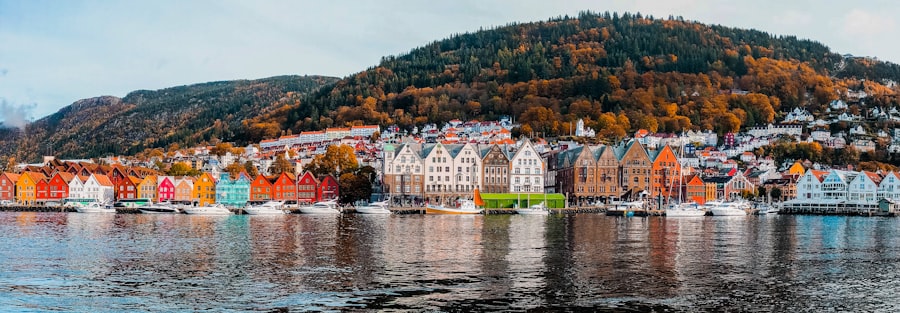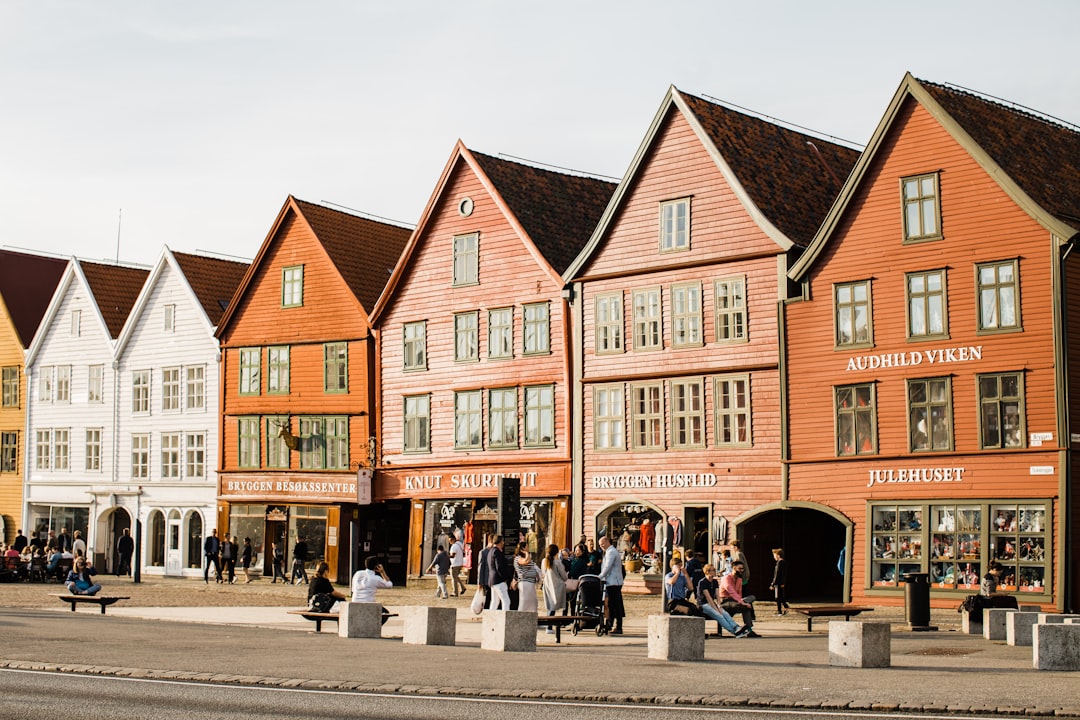Julebord, a cherished tradition in Norway, is a festive gathering that celebrates the Christmas season with colleagues, friends, and family. This event, which translates to “Christmas table,” is an opportunity for people to come together, share a meal, and enjoy the spirit of the holidays. The Julebord typically takes place in December and is marked by an abundance of food, drink, and merriment.
It serves as a way to strengthen bonds among colleagues and friends, allowing them to unwind and celebrate the year’s achievements before the holiday break. The significance of Julebord extends beyond mere celebration; it embodies the essence of Norwegian culture, where community and togetherness are highly valued. As the winter nights grow longer and colder, the warmth of shared experiences becomes even more important.
The Julebord is not just a feast; it is a reflection of the Norwegian way of life, where hospitality and camaraderie are at the forefront. For those new to Norway or unfamiliar with this tradition, understanding the nuances of Julebord can enhance the experience and ensure that one participates in a manner that is respectful and enjoyable. Your journey to a smooth relocation starts here. Talk one-on-one with a Norway Relocation specialist and turn your plan into a reality. https://norwayrelocation.no/one-hour-strategy-session/
Summary
- Julebord is a traditional Norwegian Christmas celebration that involves feasting, drinking, and socializing with colleagues and friends.
- Dress code for Julebord is typically smart-casual, with some events requiring formal attire. It’s important to check the invitation for specific dress code instructions.
- Punctuality is key for Julebord, and guests are expected to arrive on time. It’s considered rude to be late, as it disrupts the seating arrangements and the flow of the event.
- Seating arrangements at Julebord are often pre-determined, so it’s important to follow the host’s instructions and take your assigned seat.
- When toasting at Julebord, it’s customary to maintain eye contact and take a sip after each toast. It’s important to pace yourself and drink responsibly throughout the event.
Dress Code and Attire
When attending a Julebord, understanding the dress code is essential to making a good impression. The attire can vary depending on the nature of the gathering; however, it generally leans towards smart casual or formal wear. For men, this might mean wearing a suit or smart trousers paired with a crisp shirt, while women often opt for elegant dresses or tailored outfits.
In some cases, traditional Norwegian attire, known as “bunad,” may be worn, especially if the event has a more formal or cultural significance. It is important to consider the venue and the host when selecting your outfit. A Julebord held in a restaurant may have a different vibe compared to one hosted at a private home.
Regardless of the setting, dressing appropriately shows respect for the occasion and the people you are celebrating with. Additionally, it is wise to keep in mind that Norwegians tend to appreciate understated elegance over ostentatious displays of wealth. Therefore, opting for classic styles and subtle colours can help you blend in seamlessly with your surroundings.
Punctuality and Arrival

Punctuality is a cornerstone of Norwegian culture, and this holds true for Julebord events as well. Arriving on time is not only a sign of respect for your hosts but also reflects your commitment to the gathering. In Norway, being late can be perceived as inconsiderate, so it is advisable to plan your journey accordingly to ensure you arrive promptly.
If you find yourself running late due to unforeseen circumstances, it is courteous to inform your host as soon as possible. Upon arrival, it is customary to greet your hosts warmly and express your gratitude for their invitation. A simple “takk for invitasjonen” (thank you for the invitation) goes a long way in establishing a positive rapport.
As you enter the venue, take a moment to observe the atmosphere and engage with fellow guests. This initial interaction sets the tone for the evening and allows you to ease into the festivities.
Seating Arrangements
Seating arrangements at a Julebord can vary significantly based on the size of the gathering and the preferences of the host. In larger events, assigned seating may be implemented to encourage mingling among guests who may not know each other well. In smaller gatherings, guests might have more freedom to choose their seats.
Regardless of the arrangement, it is important to follow any guidelines set by your host. When seated, be mindful of your neighbours and engage in conversation with those around you. This is an excellent opportunity to get to know new people and strengthen existing relationships.
If you find yourself seated next to someone you do not know well, take the initiative to introduce yourself and ask questions about their interests or experiences. This not only fosters a sense of community but also enhances the overall atmosphere of the Julebord.
Toasting and Drinking Etiquette
Toasting is an integral part of Julebord celebrations, often serving as a way to express goodwill and camaraderie among guests. The host typically initiates the first toast, which may be followed by others throughout the evening. When raising your glass for a toast, it is customary to make eye contact with those around you while offering a warm smile.
This gesture signifies respect and connection among participants. In terms of drinking etiquette, it is important to remember that moderation is key. While Norwegians enjoy their beverages during festive occasions, excessive drinking can lead to discomfort and disrupt the celebratory atmosphere.
If you choose to partake in alcoholic drinks, be mindful of your limits and consider alternating between alcoholic and non-alcoholic beverages. Additionally, if you prefer not to drink alcohol, it is perfectly acceptable to opt for soft drinks or water without drawing attention to yourself.
Food and Dining Customs

The culinary aspect of Julebord is one of its most delightful features, showcasing traditional Norwegian dishes that reflect the season’s bounty. A typical Julebord spread may include cured meats, fish dishes such as herring or salmon, hearty stews, and an array of side dishes like potatoes and root vegetables. Desserts often feature festive treats such as gingerbread cookies or rice pudding with almonds hidden inside—a fun tradition where finding the almond brings good luck.
Dining customs during Julebord are generally relaxed yet respectful. It is customary to wait for everyone at the table to be served before beginning your meal. When dining, remember to use utensils appropriately and engage in conversation with those around you while enjoying your food.
Sharing stories about favourite holiday traditions or discussing plans for Christmas can enhance the dining experience and create lasting memories.
Conversation Topics
Engaging in conversation during Julebord is an essential part of fostering connections among guests. While it is common to discuss light-hearted topics such as holiday plans or favourite Christmas memories, it is wise to steer clear of controversial subjects like politics or religion that may lead to discomfort or disagreement. Instead, focus on shared interests or experiences that can spark lively discussions.
As you navigate conversations throughout the evening, be attentive to cues from your fellow guests. If someone seems particularly passionate about a topic, encourage them to share more by asking open-ended questions. This not only shows genuine interest but also helps create an inclusive atmosphere where everyone feels valued and heard.
Gift Giving and Exchanging
Gift giving during Julebord can vary depending on the nature of the gathering and the relationship between guests. In some cases, it may be customary for colleagues or friends to exchange small gifts as tokens of appreciation for one another’s company throughout the year. These gifts need not be extravagant; thoughtful gestures such as homemade treats or personalised items often hold more meaning than expensive purchases.
If you are invited to a Julebord where gift giving is expected, consider bringing something that reflects your personality or interests while also being considerate of Norwegian customs. A beautifully wrapped box of chocolates or a bottle of local wine can make for excellent gifts that are sure to be appreciated by your hosts or fellow guests.
Participation in Activities and Games
Julebord celebrations often include various activities and games designed to entertain guests and foster camaraderie among participants. These activities can range from traditional Norwegian games to modern icebreakers that encourage interaction among attendees. Engaging in these activities not only adds an element of fun but also helps break down barriers between guests who may not know each other well.
If you find yourself hesitant about participating in games or activities, remember that everyone is there to enjoy themselves and create lasting memories together. Embrace the spirit of fun by joining in on group games or sharing stories during icebreaker sessions. Your willingness to participate will likely inspire others to do the same, contributing to an enjoyable atmosphere throughout the evening.
Departure and Goodbyes
As the evening draws to a close, it is important to express gratitude towards your hosts for their hospitality. A heartfelt “takk for en hyggelig kveld” (thank you for a lovely evening) goes a long way in showing appreciation for their efforts in organising such a delightful gathering. If you have made new connections during the event, take a moment to exchange contact information or express your desire to meet again in the future.
When saying goodbye, be sure to acknowledge fellow guests with warm farewells as well. A simple handshake or hug can convey goodwill and leave a positive impression as you part ways. Remember that these connections may lead to future opportunities for collaboration or friendship beyond the Julebord.
Post-Julebord Etiquette
After attending a Julebord, it is courteous to follow up with your hosts or fellow guests in some manner. Sending a thank-you message via email or social media can reinforce connections made during the event while expressing appreciation for their hospitality. This gesture not only reflects good manners but also helps solidify relationships that may have begun during the festivities.
For those who are new to Norway or looking to deepen their understanding of Norwegian culture, consider enrolling in Norwegian courses at the NLS Norwegian Language School in Oslo after experiencing Julebord firsthand. These courses provide an excellent opportunity to learn more about language nuances while immersing yourself further into Norwegian traditions and customs—an invaluable asset as you navigate social gatherings like Julebord in future years. In conclusion, participating in a Julebord offers an enriching experience filled with warmth, laughter, and connection among friends and colleagues alike.
By understanding key aspects such as dress code, punctuality, dining customs, conversation topics, gift giving etiquette, and post-event follow-ups—one can fully embrace this cherished Norwegian tradition while creating lasting memories along the way.
Register for a Norwegian class at the NLS Norwegian Language School now!

